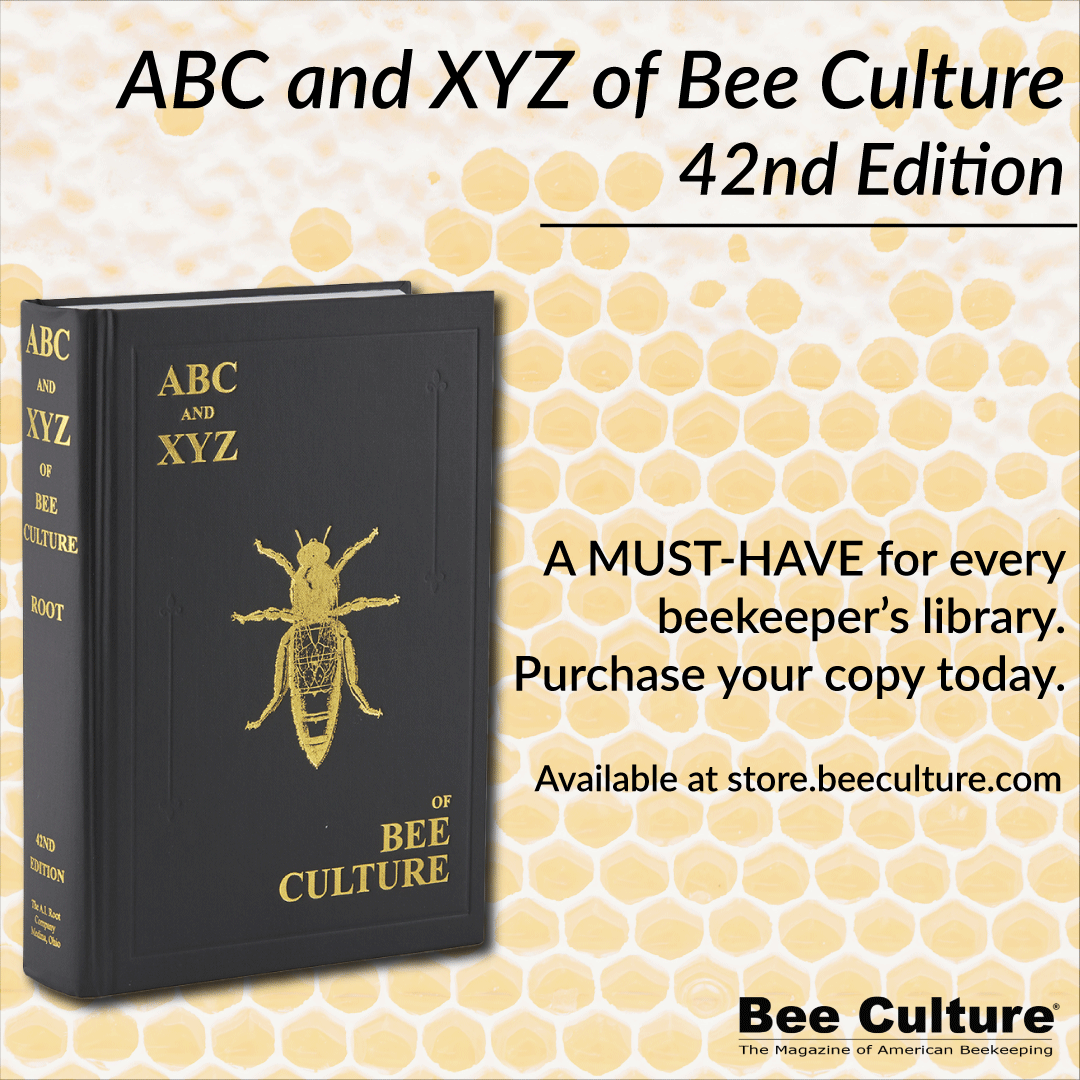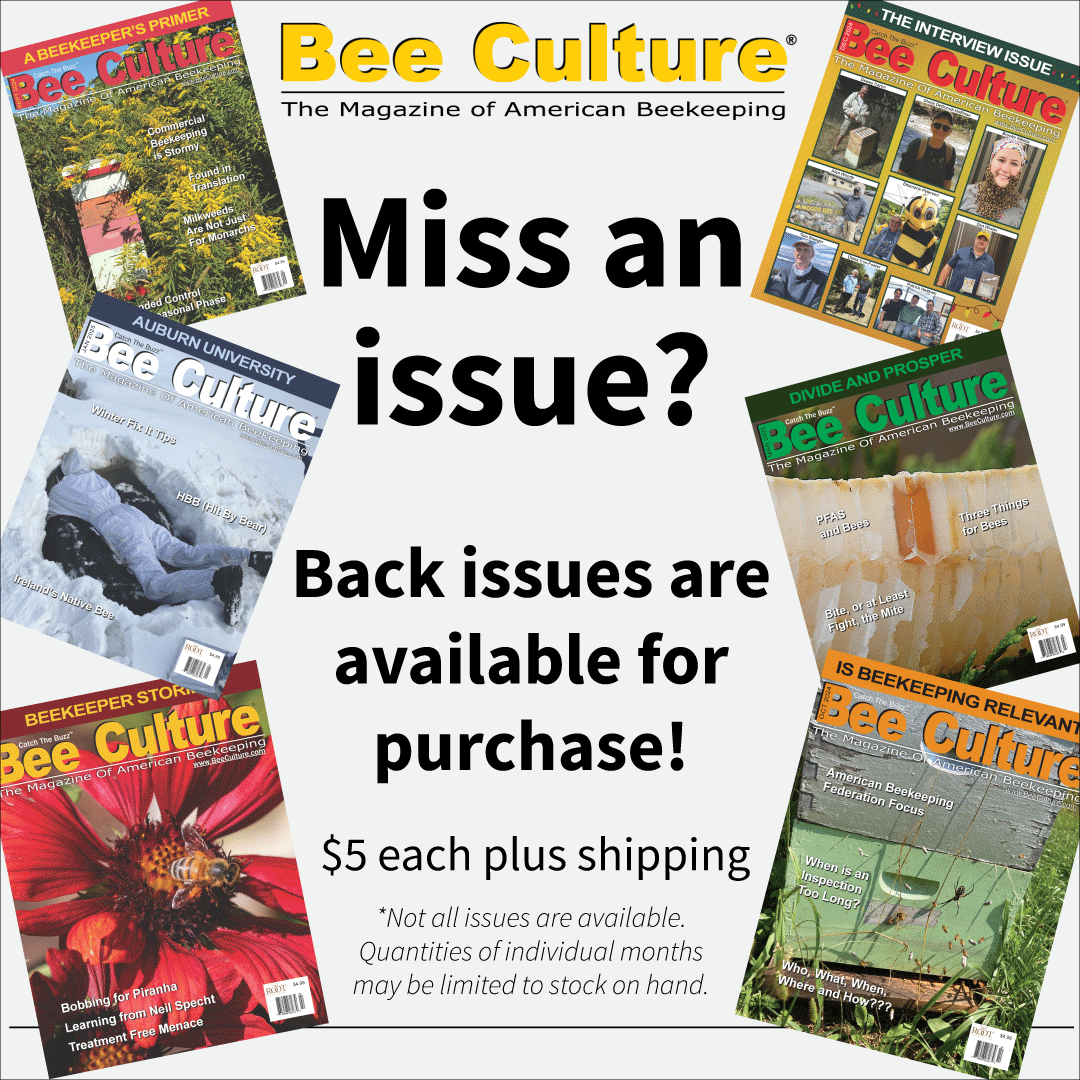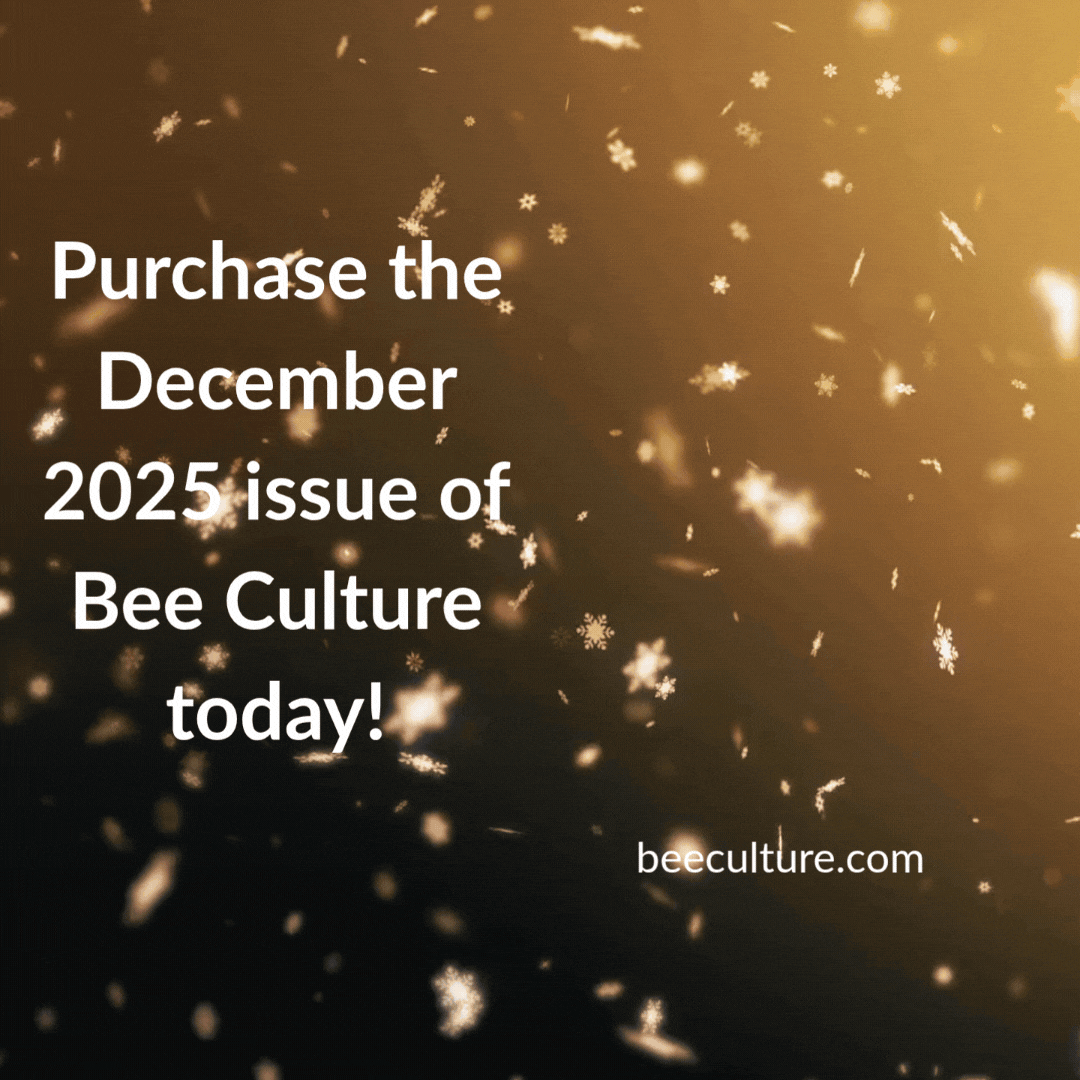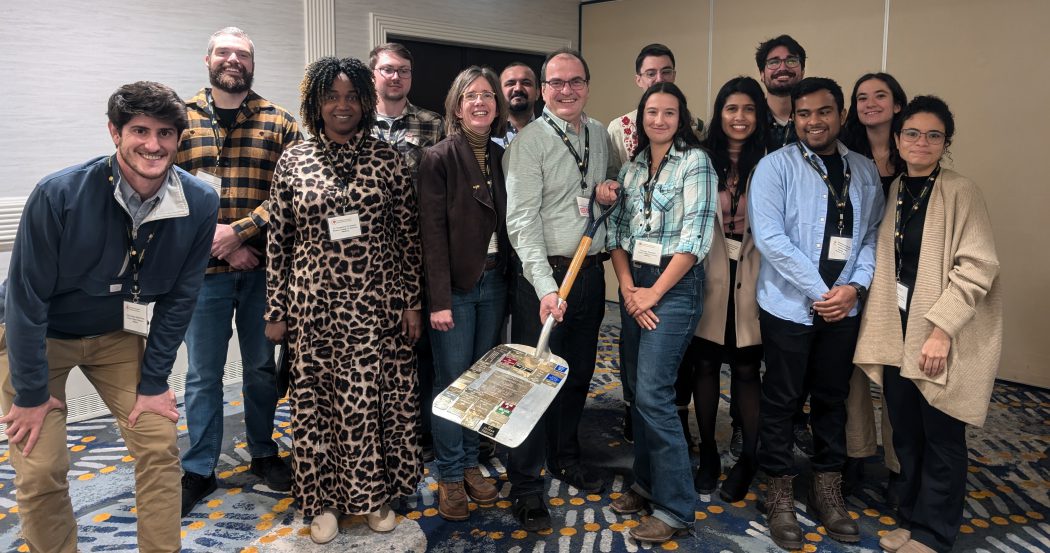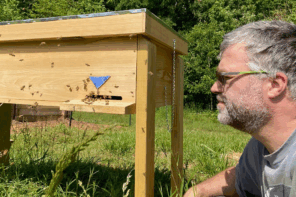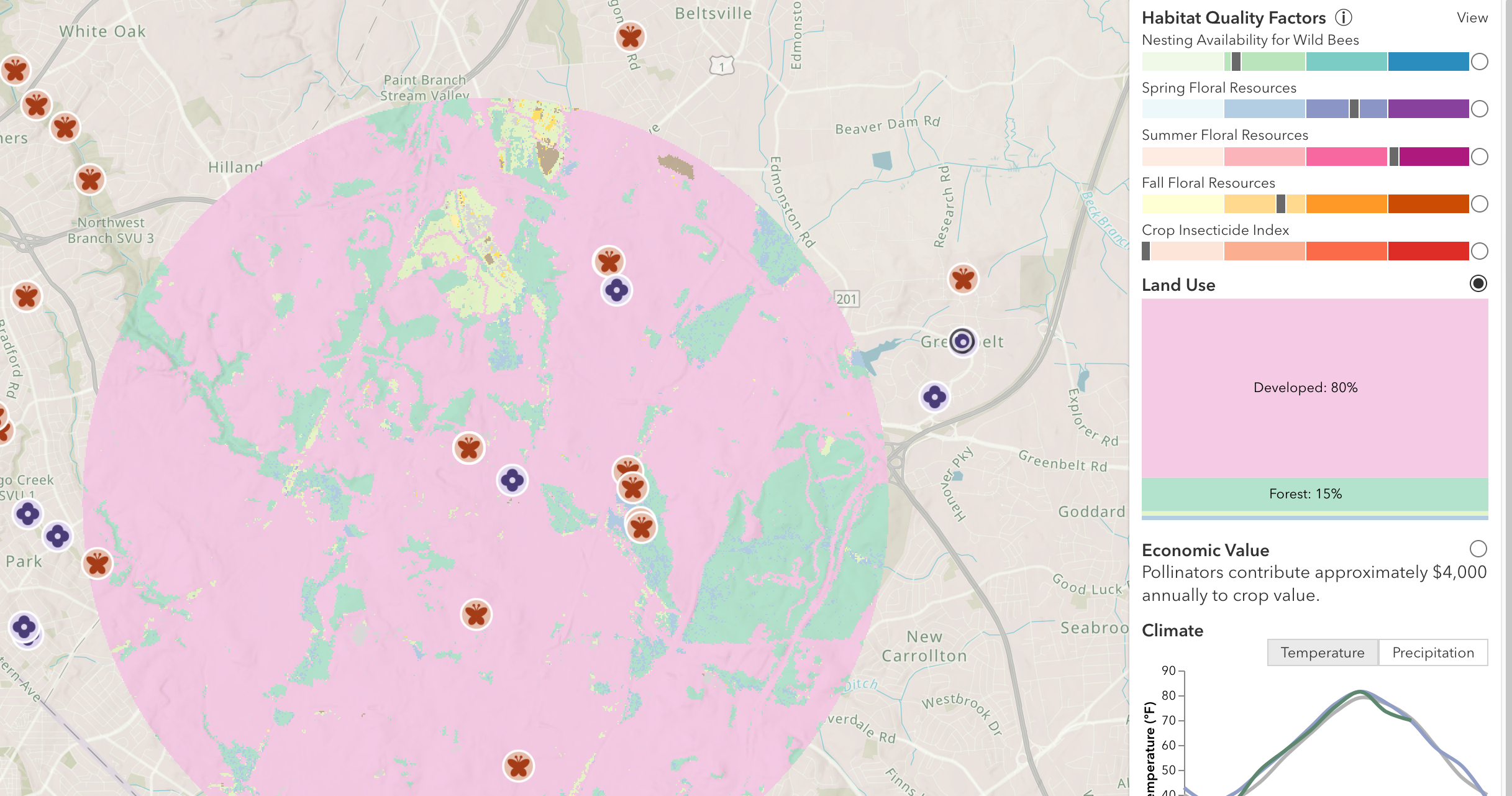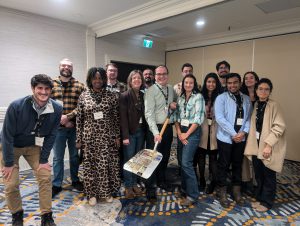 Sarah Wood
Sarah Wood
1. Obshta, O., Raza, M.F., Enadeghe, R., Edirithilake, T.L.K, Janser, M., Jose, M.S., Woodrow, H., Tellarini Prieto, E.E., Bezerra da Silva, M.C., Camilli, M.P., Lopes Neto, B., Tregobov, J., Moshynskyy, I., Simko, E. Wood, S. (2024). Surveillance of AFB in Saskatchewan and worldwide. Oral presentation, Saskatchewan Beekeepers Development Commission Annual Convention, Saskatoon, Saskatchewan, November 14-15, 2024.
Abstract 1.A.
American foulbrood (AFB) is a fatal infectious disease of honey bee brood caused by the endospore-forming bacterium, Paenibacillus larvae. P. larvae spores are resilient in the environment and thus colonies showing clinical signs of AFB are often destroyed by burning to eradicate the causative agent. To prevent outbreaks of AFB, oxytetracycline metaphylaxis is widely used in North America, resulting in sustained selective pressure for oxytetracycline resistance in P. larvae isolates. In contrast, there is a ban on use of antibiotics in beekeeping in the EU and New Zealand. To investigate the suitability of honey as appropriate sample for surveillance of antibiotic resistant P. larvae and to assess the P. larvae spore contamination, 268 honey samples from 39 countries were purchased online through Amazon. Honey samples were cultured on selective media with and without antibiotics to screen for antimicrobial resistance to the three antimicrobials approved for AFB. Antimicrobial-resistant isolates were further characterized by the broth microdilution technique to determine the Minimum Inhibitory Concentration (MIC) of antibiotic, as well as by PCR to evaluate for the presence of tetracycline resistance genes.
44% of the 268 tested samples contained P. larvae at spore concentrations ranging from 0.12-9163. 4 samples from the USA (Tennessee, Colorado, South Dakota and Florida) and two from Canada (MB and BC) contained oxytetracycline-resistant P. larvae with MICs ranging from 64-128 µg/mL with tetracycline resistance genes presence confirmed by PCR test.
Overall, presented results of this pilot study highlight the suitability of honey as a matrix for continuous surveillance and monitoring of antimicrobial resistance in P. larvae and support evidence-based decision making regarding antimicrobial use in commercial beekeeping operations.
Abstract 1.B.
Overwintering hive losses remain a critical challenge to the Canadian beekeeping industry with Saskatchewan experiencing an average Winter mortality rates of approximately 35 % over the years. Early detection with non-invasive method are vital components of effective apiary management with mitigation of economic losses within the beekeeping industry. This study aimed to investigate the potential infectious causes of overwintering hives mortality and evaluate bottom board debris as a potential diagnostic tool. A total of 43 dead colonies were sampled (n= 43) from a commercial beekeeper, with AFB outbreak, comprising of 23 colonies (n= 23) exhibiting clinical signs of American foulbrood (AFB) and 20 colonies (n= 20) without visible clinical signs. From each colony, brood chamber (BC)-honey and bottom board debris (BBD) were evaluated. These samples were subjected to laboratory analysis using culture-based techniques to detect and quantify AFB spores, Varroa mites, and Vairimorpha spp. In the control yards, a total of 57 colonies (n= 57) were evaluated, including 50 live (n= 50) and 7 dead colonies (n= 7). Similarly to the outbreak yards, BC-honey and BBD were collected from each colony and were analyzed for same infectious pathogen and pests. Numbers of Paenibaccillus larvae (CFU/g), Varroa mites, and Vairimorpha spp were compared with control yards. Results from outbreak yards (clinically positive and negative) detected significant amount of P. larvae spores (spores/g > 2). Whereas, the number of spores/g detected in BBD were significantly higher (spores/g > 2) than that of BC- honey, with less than 2 spores/g detected in extracted honey which correlates with spores detected in BBD from control yards. High numbers of Varroa mite counts were detected in both AFB outbreak and Control yards suggesting overwintering mortality to be caused by AFB and justifying BBD as an effective pathogen detector in AFB.
2. Edirithilake, T.L.K, Janser, M., Jose, M.S., Raza, M.F., Woodrow, H., Obshta, O., Tellarini Prieto, E.E., Bezerra da Silva, M.C., Camilli, M.P., Lopes Neto, B., Tregobov, J., Enadeghe, Moshynskyy, I., Simko, E. Wood, S. (2024) Investigation of EFB during blueberry pollination and novel treatment. Oral presentation, Saskatchewan Beekeepers Development Commission Annual Convention, Saskatoon, Saskatchewan, November 14-15, 2024.
Background
European foulbrood disease is a bacterial disease in honey bees caused by Melissococcus plutonius. EFB kills honey bee larvae, impacts colony health and strength. EFB outbreaks are reported in honey colonies used for blueberry pollination. In North America, the only approved antibiotic for managing and treating European foulbrood disease is oxytetracycline and there is need for other treatment options. Here, we investigated the effects of the blueberry pollination season on the health of honey bee colonies in British Columbia and use of amoxicillin as an alternative treatment for European foulbrood disease.
Methods
Effects of the blueberry pollination season on the health of honey bee colonies
Our study consisted of three yards which were used for blueberry pollination.
We collected larval swab samples and took photographs of the brood frames from 20 colonies from each yard before (April) and after blueberry pollination. We extracted DNA from the swab samples and performed qPCR to determine the presence of EFB. To determine the colony strength, we analyzed the photographs using visual analysis of interframe strength.
In-vitro larval experiment to determine the efficacy of amoxicillin in treating EFB
We grafted newly hatched day one larvae and infected them with M. plutonius. Each plate consists of four groups; a control group with uninfected larvae, an infected control group, a group treated with amoxicillin and a group treated with oxytetracycline. We tested three dosage levels – 1mg/mL, 10 mg/mL, 100 mg/mL – of amoxicillin. The larvae received the antibiotics with larval diet through day two to day five. Larvae were reared until day six. Their daily survival, weight and health status (categorized as either sick or healthy) at day six were recorded.
Results
More varied EFB levels with no brood increase after blueberry pollination season
Preliminary results show no change in brood coverage after the blueberry season (3.24 vs 3.21), while colony strength did increase (8.76 vs 10.13). EFB levels are slightly elevated, and more varied after the season (T1: M = 128 193 CFU/mL, SD = 137 331, n=11) (T2: M = 169 910 CFU/mL, SD = 371 181, n=21 )and interestingly, some larvae with no signs of EFB showed presence of M. plutonius bacteria. Work is ongoing to combine these variables to determine the overall effect that blueberry pollination has on colony health.
Amoxcillin is effective against EFB in-vitro
We found that all doses of amoxicillin significantly prolonged the larval survival than the infected control group (P <0.001). At day six, the median larval weight, was on average 85.8 mg greater than the infected group.
Conclusion
Blueberry pollination season preliminarily shows colony strength increase but no increase in brood coverage, and more variety in levels of EFB. At all concentration tested, amoxicillin can be used as a treatment for European foulbrood disease in honey bee larvae.
3. Jose, M.S., Woodrow H., Edirithilake, T.L.K., Obshta, O., Tellarini Prieto, E.E., Bezerra da Silva, M.C., Camilli, M.P., Janser, M., Lopes Neto, B., Tregobov, J., Enadeghe, R., Moshynskyy I., Simko, E., Wood, S. (2024). Efficacy of oxytetracycline, lincomycin, and tylosin as treatments for a clinical outbreak of EFB in Saskatchewan. Oral presentation, Saskatchewan Beekeepers Development Commission Annual Convention, Saskatoon, Saskatchewan, November 14-15, 2024.
Background
European foulbrood (EFB) is an enteric disease of honey bee larvae, caused by the bacterium Melissococcus plutonius. Severe outbreaks necessitate the destruction of hives and equipment, leading to significant economic losses for beekeepers. While antimicrobial therapy has shown efficacy in treating EFB disease in larvae in vitro, its effectiveness at the honey bee colony level remains uncertain. In Canada, oxytetracycline (OTC) is the only approved antibiotic for the treatment of EFB. However, there is concern about the potential emergence of OTC-resistant strains of M. plutonius. Additionally, two other antibiotics, tylosin (TYL) and lincomycin (LMC), are approved for management of America foulbrood disease and could serve as alternatives for EFB disease treatment.
Methods
In this study we aimed to evaluate the effectiveness of OTC, TYL and LMC in treating EFB symptoms in field colonies during a natural outbreak in spring 2024 in Saskatchewan. We hypothesized that colonies treated with each of these antibiotics would show improved colony strength and reduced clinical signs and bacterial load compared to controls. Beginning in May 2024, we randomized 48 (six frame) nucleus EFB-infected colonies into four treatment groups of twelve colonies. The four treatment groups included a sham treatment group which received powdered sugar at 5-day intervals, and three antibiotic-treated groups which received OTC, TYL or LMC at label doses mixed with powdered sugar at 5-day (OTC) or 7-day (TYL and LMC) intervals. Colony strength and clinical symptoms were monitored pre-treatment and for 37 days post initiation of treatment. Additionally, M. plutonius bacterial load in larvae and adult bees was quantified using qPCR.
Results
We observed clinical resolution of EFB in both control and antimicrobial-treated colonies. Post-treatment, a non-significant trend towards decreased bacterial load in larvae was noted in the OTC- and TYL-treated groups. Conversely, a non-significant increase in mean bacterial load in adult bees was observed in both control and antibiotic-treated groups.
Conclusion
Considering that EFB is often described as a self-limiting disease, this field trial suggests that antibiotic therapy may not be essential for clinical recovery of affected colonies. Instead, enhanced integrated pest management strategies should be prioritized to control this disease and reduce the risk of bacterial antimicrobial resistance and antibiotic residues in honey.
4. Tellarini Prieto, E.E., Camilli, M.P., Lopes Neto, B., Slobodian, J., Arias, A., Worthy, S., Edirithilake, T.L.K, Janser, M., Jose, M.S., Raza, M.F., Obshta, O., Bezerra da Silva, M.C., Tregobov, J., Enadeghe, Moshynskyy, I., Simko, E. Wood, S. (2024) Canola fields, honey bees and wild pollinators. Oral presentation, Saskatchewan Beekeepers Development Commission Annual Convention, Saskatoon, Saskatchewan, November 14-15, 2024.
Saskatchewan (SK) is a leading agricultural region, producing over 50% of Canada’s canola. Canola contributes to more than 70% of the honey produced in SK. While this monoculture supports high honey yields, honey bees require diverse pollen sources to meet their nutritional needs and maintain colony health. Additionally, Nosema, a common microsporidian pathogen of honey bees, poses significant challenges, particularly in agricultural landscapes with limited floral diversity.
This study was conducted across 15 sites distributed throughout the canola belt in SK, with four colonies per site spaced at least 5 km apart to ensure independence. Each site included two colonies headed by queens from Saskatchewan and two by queens from Hawaii. Honey production was monitored over three months using hive scales installed under each colony. Pollen collectors were placed on all colonies and closed for 24 hours in June, July and August to collect foraged pollen, which was sorted by color and weighed to assess diversity and availability of floral resources. Samples for Nosema spore quantification were collected from adult bees in both Spring and Fall to evaluate disease prevalence over time.
Results showed that colonies with Saskatchewan queens produced significantly more honey than those with Hawaiian queens even with higher (p< 0.0047) Nosema load than Hawaii genetic line. A total of 50 different pollen colors were identified across all samples, with an average richness of five colors per sample. Pollen richness and diversity were highest in June and July but declined at the end of the season, with canola pollen being the most collected overall. Colonies with Saskatchewan queens exhibited lower Nosema spore loads in Spring, although these differences diminished by Fall.
5. Bezerra da Silva, M.C., Martian, S., Kindopp, M., Obshta, O., Raza, M.F., Enadeghe, R., Edirithilake, T.L.K, Janser, M., Jose, M.S., Woodrow, H., Tellarini Prieto, E.E., Camilli, M.P., Lopes Neto, B., Tregobov, J., Moshynskyy, I., Simko, E. Wood, S. (2024). Effects of chronic drone larval exposure to amitraz. Oral presentation, Saskatchewan Beekeepers Development Commission Annual Convention, Saskatoon, Saskatchewan, November 14-15, 2024.
Background: The widespread use of pesticides due to agricultural intensification has been associated with chronic pesticide exposure in honey bees. Currently, the first step of pesticide safety testing for honey bees primarily focuses on workers, with limited evaluation of reproductive castes. Pesticide risk assessment in honey bees does not apply histopathology evaluation at any level, although histopathology is the gold standard evaluation in other species’ safety risk assessment. To demonstrate histopathological changes, it is necessary to identify a gonadotoxic compound to be used as a positive control. Amitraz is a commonly used miticide in honey bee colonies. This miticide has demonstrated negative effects on drone sperm viability. Thus, our study aimed to evaluate the effects of exposure to amitraz on drone testicular development during the larval stage to identify whether amitraz can be a gonadotoxic compound for honey bee drones.
Methods
We developed a protocol to rear drones from the larval stage to adulthood in the laboratory. Using this protocol, we developed an in vitro gonadotoxicity model exposure for honey bee drones from lava to adulthood. Drone larvae were exposed to incremental doses of amitraz (0.6, 1.2, and 8.9 µg/µL), and survival was monitored daily until adulthood. We measured the adult testicular weight and performed prepupal testicular histopathology to evaluate the pesticide’s effects on testicular development.
Results
We observed a significant decrease in survival from larva to adulthood in medium and high doses following amitraz exposure during the larval stage; However, the adult testicular weight did not demonstrate a negative effect following amitraz exposure. Testicular histopathology of prepupa following exposure to amitraz demonstrated a potential testicular degeneration with fewer rosettes (spermatogonia cells) in the medium and high doses.
Conclusion
Given the current results, amitraz may be used in future pesticide safety evaluations of honey bee reproductive castes as a positive control xenobiotic, which will, in turn, have broader benefits for honey bee health, agricultural productivity, food security and ecosystem health.


